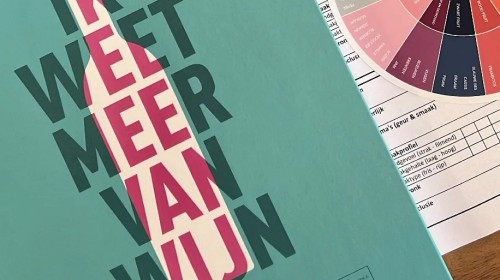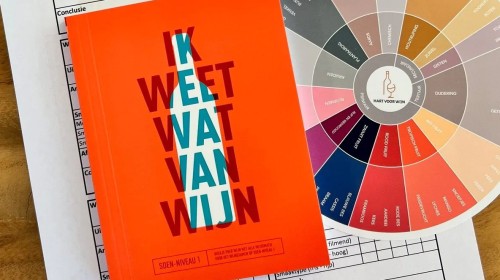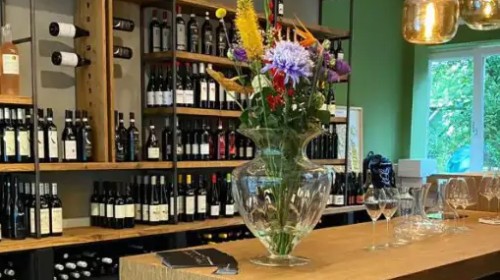
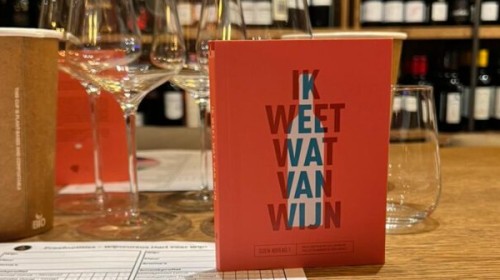
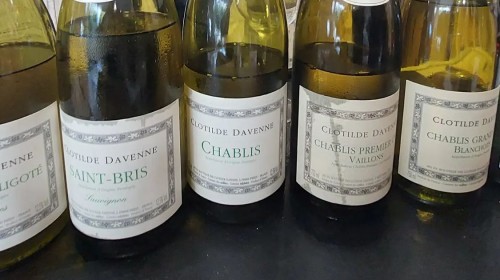

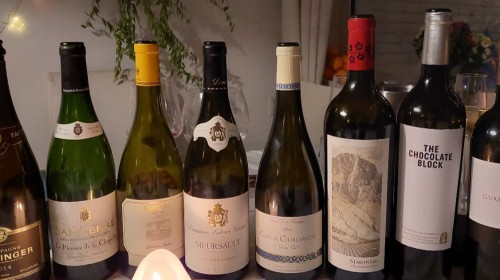

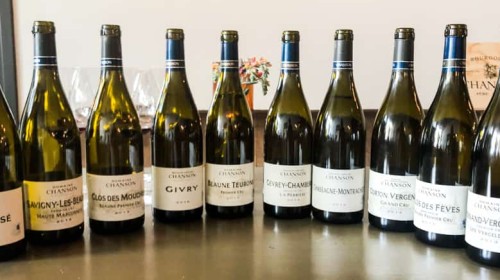

Meer over wijncursussen:
Soorten wijn in de wereld
Er zijn veel verschillende soorten wijn en de specifieke variëteiten kunnen variëren, afhankelijk van de regio en de productiestijl. Enkele van de meest voorkomende soorten wijn zijn rode wijn, witte wijn, mousserende wijn en roséwijn. Binnen deze brede categorieën zijn er veel verschillende soorten wijn gemaakt van verschillende druivensoorten en geproduceerd met behulp van verschillende wijnbereidingstechnieken. Rode wijn kan bijvoorbeeld worden gemaakt van druivensoorten zoals Cabernet Sauvignon, Merlot en Pinot Noir, terwijl witte wijn kan worden gemaakt van variëteiten zoals Chardonnay, Sauvignon Blanc en Riesling. Daarnaast zijn er veel verschillende soorten mousserende wijn, zoals champagne, prosecco en cava, en veel verschillende soorten roséwijn, zoals droge rosé, zoete rosé en sprankelende rosé.
Meer over wijn leren
Er zijn veel verschillende manieren om meer over wijn te leren. Een manier is om een wijncursus te volgen of een wijnproeverij bij te wonen, waar je meer te weten kunt komen over de verschillende soorten wijn, hoe ze worden gemaakt en hoe je wijn het beste kunt proeven en beoordelen. Je kunt ook meer over wijn leren door boeken of artikelen van wijn te lezen, video's of documentaires over wijn te bekijken, of door wijnhuizen te bezoeken en met wijnmakers te praten. Daarnaast leer je over wijn door vooral veel verschillende wijnen te proberen en kennis te nemen van de smaken en aroma's die je proeft, en door vragen te stellen en advies in te winnen bij ervaren wijnliefhebbers. Met een wijncursus zoals SDEN of WSET leer je snel en compleet heel veel over alle druijven, wijnen en het proeven. Dit kan al met een basiscursus voor elke liefhebber tot een sommelier cursus op het hoogste niveau.
De doelgroep van een wijncursus
Een wijncursus leert deelnemers doorgaans over de verschillende soorten wijn, hoe wijn wordt gemaakt en hoe wijn moet worden geproefd en beoordeeld. Naast het leren over de verschillende stijlen en smaken van wijn, kan een wijncursus ook onderwerpen behandelen als eten en wijnarrangement, wijnregio's en -productie, en de geschiedenis en cultuur van wijn. Deelnemers aan een wijncursus kunnen ook de gelegenheid krijgen om verschillende wijnen te proeven en hun smaken en aroma's te leren beschrijven en beoordelen.
Een wijncursus is typisch bedoeld voor mensen die meer over wijn willen leren en hun kennis en begrip van het onderwerp willen verdiepen. Wijncursussen kunnen nuttig zijn voor wijnliefhebbers die meer willen leren over verschillende soorten wijn en hoe je deze kunt proeven en beoordelen, maar ook voor mensen die in de wijnindustrie werken of geïnteresseerd zijn in een carrière in de wijnindustrie. Wijncursussen kunnen ook een leuke en leerzame ervaring zijn voor mensen die gewoon graag wijn drinken en er meer over willen leren. Over het algemeen is een wijncursus bedoeld voor iedereen die meer over wijn wil leren en zijn kennis en waardering voor het onderwerp wil vergroten.
Belangrijk bij het beoordelen van een wijncursus
Er zijn verschillende factoren die u kunnen helpen beoordelen of een wijncursus goed is of niet. Hier zijn een paar dingen om te overwegen:
- De inhoud van de cursus: Een goede wijncursus geeft uitgebreide en gedetailleerde informatie over verschillende soorten wijn, hoe ze worden gemaakt en hoe ze moeten worden geproefd en beoordeeld. De cursus moet een breed scala aan onderwerpen behandelen en diepgaande kennis bieden die relevant en nuttig is voor wijnliefhebbers.
- De instructeur: Een goede wijncursus wordt gegeven door een ervaren en deskundige instructeur die gepassioneerd is door wijn en een diep begrip heeft van het onderwerp. De instructeur moet in staat zijn om complexe concepten op een gemakkelijk te begrijpen manier uit te leggen, vragen te beantwoorden en studenten te begeleiden.
- Het cursusformaat: Een goede wijncursus is goed georganiseerd en gestructureerd, met een duidelijke voortgang van het ene onderwerp naar het volgende. De cursus moet een mix van lezingen, discussies, proeverijen en andere interactieve activiteiten bevatten die studenten betrokken houden en hen helpen effectief te leren.
- Het cursusmateriaal: Een goede wijncursus biedt studenten nuttig en informatief cursusmateriaal, zoals hand-outs, wijnproefbladen en andere bronnen die hen kunnen helpen bij het leren en toepassen van wat ze hebben geleerd.
- De cursusfeedback: Een goede wijncursus heeft positieve feedback van eerdere cursisten, die inzicht kunnen geven in de kwaliteit van de cursus en de effectiviteit van de instructeur. Het is een goed idee om beoordelingen te lezen en referenties te vragen van eerdere studenten voordat u zich inschrijft voor een wijncursus.
Op CourseSpots vind je verschillende wijncursussen en wijndocenten. Je kunt meer lezen over de inhoud van de cursus, prijzen vergelijken, zien waar de lessen worden gegeven, lezen over de achtergrond van de wijndocent en ook worden reviews en ratings gedeeld. Heb je nog een vraag dan kun je altijd contact opnemen met de docenten of met ons.
Hoe beoordeel je een wijn?
Er zijn verschillende factoren die u kunnen helpen bij het wijnproeven en beoordelen van een wijn. Hier zijn een paar belangrijke zaken waarmee u rekening moet houden bij het proeven en beoordelen van wijn:
- Uiterlijk: Kijk eerst naar de wijn en let op de kleur, helderheid en viscositeit. Is de wijn licht of donker? Helder of bewolkt? Dun of dik? Het uiterlijk van de wijn kan enkele aanwijzingen geven over de leeftijd, de druivensoort en het wijnbereidingsproces.
- Aroma: Draai vervolgens de wijn in het glas om zijn aroma's vrij te maken, en snuif een paar keer diep op om te proberen de verschillende geuren en geuren te identificeren. Wat ruik je? Heeft de wijn fruitige, bloemige, kruidige of kruidige aroma's? Het aroma van de wijn kan je een idee geven van de smaak en het karakter.
- Proeven: Neem een klein slokje van de wijn en rol het rond je mond om je tong en smaakpapillen te bedekken. Wat proef je? Is de wijn zoet, zuur, zout of bitter? Heeft het fruitige, bloemige, kruidige of kruidige smaken? De smaak van de wijn kan u helpen de kwaliteit en balans te bepalen.
- Mondgevoel: Let tijdens het drinken op de textuur en body van de wijn. Is de wijn light, medium of full-bodied? Is het glad, tannine of zuur? Het mondgevoel van de wijn kan u helpen de structuur en complexiteit ervan te begrijpen.
- Afdronk: Denk na het doorslikken of uitspugen van de wijn even na over de nasmaak. Heeft de wijn een lange, medium of korte afdronk? Laat het een aangenaam of onaangenaam gevoel in je mond achter? De afdronk van de wijn kan wijzen op zijn potentieel voor veroudering en evolutie.
Door de tijd te nemen om het uiterlijk, het aroma, de smaak, het mondgevoel en de afdronk van een wijn zorgvuldig te evalueren, kunt u de kwaliteit en het karakter ervan beter begrijpen en bepalen of het een wijn is die u lekker vindt.
Wat is de beste wijn van de wereld?
Het is moeilijk om de "beste" wijn ter wereld te bepalen, aangezien de meningen over wat een goede wijn is, sterk kunnen verschillen tussen wijnliefhebbers. Bovendien kunnen de kwaliteit en kenmerken van wijn aanzienlijk variëren, afhankelijk van factoren zoals de druivensoort, het wijnbereidingsproces en het terroir (de combinatie van klimaat, bodem en andere factoren die het karakter en de smaak van de wijn beïnvloeden). Enkele van de meest gewaardeerde wijnen ter wereld zijn Franse wijnen zoals Bordeaux, Bourgondië en Champagne, evenals Italiaanse wijnen zoals Barolo en Brunello di Montalcino, en Spaanse wijnen zoals Rioja en Ribera del Duero. Uiteindelijk is de beste wijn er een waar jij van geniet en die voldoet aan uw persoonlijke voorkeuren en smaken. De locatie en het gezelschap bepalen daarnaast ook wat jij de beste wijn van de wereld vindt.
Kwaliteit bepalen van wijn in de supermarkt of slijterij
Heb jij nog geen wijncursussen gevolgd en kom je niet uit de informatie die op het etiket staat? Probeer dan eens de fles te scannen met de app van Vivino. Hiermee vind je snel meer informatie over de wijn en worden ook de reviews en ratings getoond.
Wat is het verschil tussen witte, rode of rosé wijn?
Het belangrijkste verschil tussen witte, rode en roséwijn is de kleur, die wordt bepaald door de gebruikte druivenrassen en het wijnbereidingsproces. Witte wijn wordt gemaakt van witte druivenrassen en heeft een lichtgele of stroachtige kleur. Rode wijn wordt gemaakt van rode druivensoorten en heeft een dieprode of paarse kleur. Roséwijn, ook wel roze wijn genoemd, wordt gemaakt van rode druivensoorten en heeft een lichtroze of zalmachtige kleur.
Naast de kleur kunnen witte, rode en roséwijnen ook verschillen qua smaak en aroma. Witte wijnen hebben over het algemeen meer subtiele en delicate smaken en aroma's, met tonen van citrus, steenfruit en bloemen. Rode wijnen daarentegen hebben meer gedurfde en intense smaken en aroma's, met tonen van bessen, kersen en kruiden. Roséwijnen kunnen verschillende smaken en aroma's hebben, afhankelijk van de druivensoort en het wijnbereidingsproces, maar ze hebben over het algemeen een frisser en levendiger karakter dan rode wijnen.
Witte, rode en roséwijnen kunnen ook verschillen qua body en textuur. Witte wijnen zijn over het algemeen lichter en verfrissender, terwijl rode wijnen doorgaans voller en robuuster zijn. Roséwijnen kunnen qua body en textuur variëren, maar zijn vaak lichter en delicater dan rode wijnen.
Over het algemeen is het belangrijkste verschil tussen witte, rode en roséwijnen de kleur, maar ze kunnen ook verschillen in hun smaken, aroma's, body en textuur.
Hoeveel druiven zitten er in een fles wijn?
Het is moeilijk om het exacte aantal druiven te bepalen dat wordt gebruikt om een fles wijn te maken, omdat dit kan variëren afhankelijk van factoren zoals de druivensoort, de grootte van de druiven en het wijnbereidingsproces. Gemiddeld zijn er ongeveer 600-800 druiven nodig om een fles wijn te maken, hoewel dit kan variëren van slechts 400 druiven tot wel 1.000 of meer. Bovendien kan het aantal druiven dat wordt gebruikt om een fles wijn te maken variëren, afhankelijk van de grootte van de fles. Voor een fles wijn van 75 cl (750 ml) zijn bijvoorbeeld meer druiven nodig dan voor een fles van 50 cl (500 ml).
Word een echte wijnkenner
Tijdens een wijncursus leer je alerlei feiten en weetjes over hoe wijn gemaakt wordt, de verschillende druivensoorten en de invloed van het terroir. Maar het allerbelangrijkste is dat je een wijn leert te beoordelen op basis van kijken, ruiken en proeven. Je leert hierdoor een goede wijn te waarderen, maar je leert vooral ook wat jezelf lekker vindt. Je kunt een wijnproeverij volgen of een officiële SDEN- of WSET-opleiding volgen (mét examen). Bekijk welke wijndocent bij jou in de buurt zit en ontdek welke experts jou alles kunnen leren over wijn.
Wijn & spijs combinaties
Het combineren van wijn en spijs verwijst naar de praktijk van het selecteren van specifieke wijnen om bij bepaalde gerechten te serveren om de algehele eetervaring te verbeteren. Het idee achter het combineren van wijn en spijs is dat bepaalde wijnen de smaken, texturen en aroma's van verschillende voedingsmiddelen kunnen aanvullen, wat resulteert in een harmonieuze en uitgebalanceerde maaltijd. Een rijke, volle rode wijn kan bijvoorbeeld worden gecombineerd met een stevig vleesgerecht, terwijl een knapperige, lichte witte wijn kan worden gecombineerd met een gerecht met verse zeevruchten.
Bij het combineren van wijn met eten zijn er een paar belangrijke principes waarmee u rekening moet houden. Ten eerste is het belangrijk om het gewicht en de intensiteit van de wijn af te stemmen op het gewicht en de intensiteit van het gerecht. Een delicate witte wijn is bijvoorbeeld misschien niet geschikt voor een zwaar, rijk gerecht, terwijl een gedurfde, volle rode wijn een licht, delicaat gerecht zou kunnen overheersen. Ten tweede is het belangrijk om rekening te houden met de smaken en aroma's van zowel de wijn als het eten, en te zoeken naar elementen die elkaar aanvullen of contrasteren. Zo kan een fruitige witte wijn goed passen bij een gerecht met fruitige of kruidige smaken, terwijl een eikenhouten rode wijn juist goed past bij een gerecht met hartige of rokerige smaken. Ten slotte is het belangrijk om rekening te houden met de algehele eetervaring en wijnen te selecteren die de sfeer en het genot van de maaltijd versterken.
Beter een live dan een een online wijncursus?
Natuurlijk kan je in een online wijncursus ook veel leren over wijn. Je gaat dan vooral aan de slag met de theorie en leert van alles over de geschiedenis van wijn, het terroir van een wijn en welke smaken goed bij elkaar passen. Maar het belangrijkste is natuurlijk de praktijk, waarin je de wijn echt gaat proeven! Wij zijn dan ook groot voorstander van live les, op locatie. Hier kun je de verschillende wijnen proeven, vragen stellen aan de leraar en ervaringen uitwisselen met andere deelnemers. Leuk, lekker én gezellig!
Lekker eten bij de wijn?
Bij lekkere wijn hoort één ding, en dat is lekker eten! Wil je weten hoe je de beste gerechten maakt? Neem dan een kijkje op de categorie pagina eten & drinken. Om je alvast een handje te helpen zijn hier een paar voorbeelden!
Veel gestelde vragen over een wijn cursus:
Staat jouw vraag (of het antwoord dat je zoekt) hier niet tussen? Neem dan contact met ons op, wij helpen je graag verder!


 Amsterdam
Amsterdam


